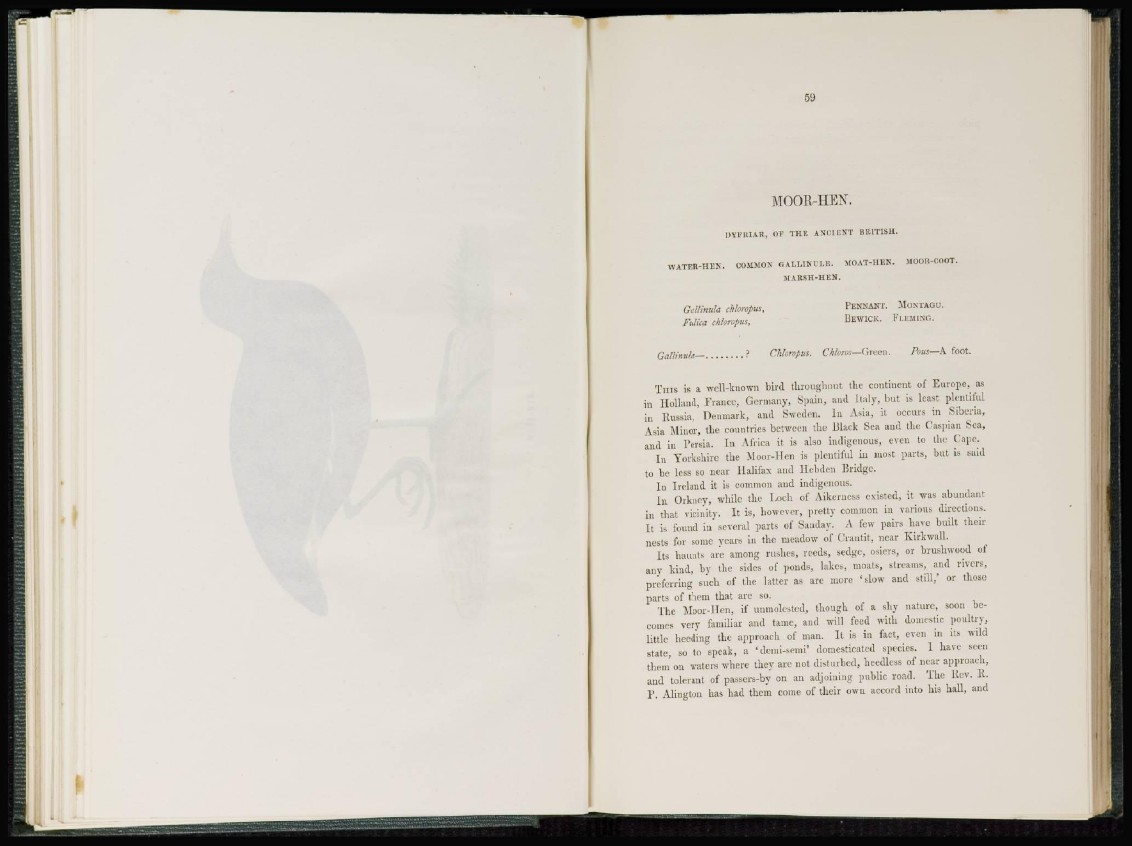
MOOR-HEN.
DYFRIAR, OF THE ANCIENT BRITISH.
WATER-HEX. COMMON GALLINULE. MOAT-HEN. MOOR-COOT.
MARSH-HEN.
GaUinula chloropus. PENNANT. MONTAGU.
Fulica chloropus, BEWICK. FLEMING.
GaUinula— ? Chloropus. Chloros—Green. Pous—A foot.
THIS is a well-known bird through oat the continent of Europe, as
in Holland, France, Germany, Spain, and Italy, but is least plentiful
in Russia, Denmark, and Sweden. In Asia, it occurs in Siberia,
Asia Minor, the countries between the Black Sea and the Caspian Sea,
and in Persia. In Africa it is also indigenous, even to the Cape.
I n Yorkshire the Moor-Hen is plentiful in most parts, but is said
to be less so near Halifax and Hebden Bridge.
I n Ireland it is common and indigenous.
I n Orkney, while the Loch of Aikerness existed, it was abundant
in that vicinity. It is, however, pretty common in various directions.
I t is found in several parts of Sanday. A few pairs have built their
nests for some years in the meadow of Crantit, near Kirkwall.
Its haunts are among rushes, reeds, sedge, osiers, or brushwood of
any kind, by the sides of ponds, lakes, moats, streams, and rivers,
preferring such of the latter as are more 'slow and still,' or those
parts of them that are so.
The Moor-Hen, if unmolested, though of a shy nature, soon becomes
very familiar and tame, and will feed with domestic poultry,
little heeding the approach of man. It is in fact, even in its wild
state, so to speak, a 'demi-semi' domesticated species. I have seen
them on waters where they are not disturbed, heedless of near approach,
and tolerant of passers-by on an adjoining public road. The Hev. R.
P . Alington has had them come of their own accord into his hall, and